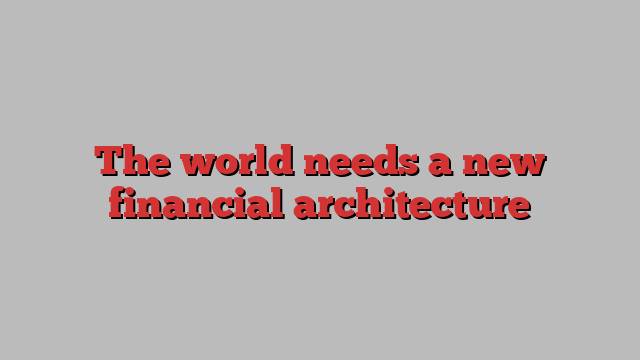
Stay informed with free updates
Simply sign up to the Global Economy myFT Digest — delivered directly to your inbox.
The writer is executive director for Germany at the World Bank
What sets humans apart from animals is that we tell stories to drive collective action. The international financial architecture is one of the central narratives that have shaped our economic thinking for the past eight decades. Its institutions, rules and central actors affect the way economies, governments, firms and individuals interact financially.
This architecture can catapult economies on to the path of progress, just as it can leave entire regions stuck and marginalised. It is crucial, therefore, that we ask ourselves what the ultimate purpose of the IFA is, who its beneficiaries are and who is actually telling the story.
The IFA we rely on today has its origins in the last century. It emerged from the second world war, when the UN, World Bank and IMF were established. And its main target, after an era of global conflict and economic chaos, was stability and a rules-based order that ensured predictability.
The IFA did produce remarkable results. It allowed for sustained economic growth and lifted billions of people out of poverty. The flipside of its stability, however, was a fairly direct path towards global warming, the destruction of ecosystems, a heightened risk of pandemics and deep-rooted inequalities.
It is high time, therefore, that we redefine the central purpose of the IFA. Success will consist not only in avoiding the risks of the past, but also in preventing those of the future. This is not to trade stability for change — rather, it is to argue that there will only be social, ecological and economic stability if we do change.
Here are five proposals.
First, the discrepancy between what industrialised countries preach and what they actually do domestically needs to be reduced. Clear progress on climate and biodiversity targets will be the crucial test of their credibility over the next decade. This should be buttressed with commitments on global minimum taxation and fighting illicit financial flows.
Second, front-loading finance for investments for the climate transition is good economics and good politics. We should scale public and private finance commensurate with the problem, not with arguments about our “capacity to pay”.
Third, the appropriate mix of public and private, external and domestic financing will depend on the context. But one thing is clear: multilateral development banks are the most efficient leveraging vehicle for public injections of capital.
Fourth, performance matters. Access to finance and transformative support for poorer countries should be increased where governments are willing to do their part for real developmental impact.
Finally, reshaping our collective IFA story only works if fair and just representation is ensured. Clearly, we need to amplify the voices of under-represented countries — or, more importantly, their populations. This can be achieved by increasing “basic votes” per country in international financial institutions and by further moderating the relative impact of higher GDP rates while preserving the financial stability of their balance sheets. Other measures could include requiring double majorities (number of countries and vote shares) for decisions such as the election of the president of the World Bank or managing director of the IMF. That would, however, also require improved governance within countries so that representation is achieved in practice as well as in theory.
The updated story we need to tell is that of a new wealth consensus — a global agreement among countries and their citizens to foster the long-term health of the planet while providing equitable prosperity. For this, bold decisions are required if we are not to slide into international financial anarchy.